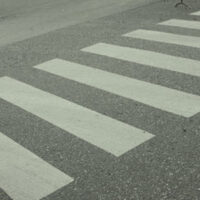True-False About Pedestrian Accidents in California

With more people taking to the streets on foot for work, exercise, and enjoying the outdoors, it is not surprising that pedestrian accidents are a serious problem in California. However, you might be shocked to learn that the state has the highest pedestrian fatality rate nationwide – at about 25 percent more than the average across all US states. The California Office of Traffic Safety (OTS) reports that almost 900 walkers are killed and another 14,000 are injured every year, and the issue is only getting worse: Pedestrian fatalities rose 26 percent from 2014 to 2018.
If you were hurt in a pedestrian accident, you may be overwhelmed about the laws and how you can recover compensation for your losses. You can trust an Oakland pedestrian accident lawyer to explain your rights and remedies, but a true-false overview might help you understand the basics.
True: Pedestrian accidents are caused by negligence. It is rare that these incidents result from intentional conduct; instead, most traffic collisions occur because a motorist breached the legal duty to drive safely. In a pedestrian accident, negligence may take the form of speeding, failure to yield, improper lane changes, or distracted driving.
False: There is a specialized legal process for pedestrian accident claims. In truth, these cases generally go through the same process as auto crashes. You start by filing a claim with the at-fault driver’s insurance company and attempting to work out a settlement. If you cannot reach an agreement with the insurer, you must file a lawsuit in court.
True: You need solid evidence showing fault. The key to prevailing in a pedestrian accident case is collecting as much proof as possible about the responsible driver’s negligence. At the scene, you should try to obtain:
- Pictures of the intersection or stretch of roadway;
- Images of any traffic signs or signals;
- Information about damage to vehicles; and,
- Contact details from witnesses or bystanders that observed the collision.
False: The claims process is nothing more than filling out forms. The claims process is extremely challenging, since insurers are always looking for reasons to deny payment. You must provide sufficient evidence of fault and your injuries, a task that goes beyond completing insurance forms.
True: There are some limitations on compensation in a pedestrian accident case. Even if you do have essential proof, you should be aware of two laws that can affect your compensation:
- California’s statute of limitations gives you two years to file a lawsuit in court, so you may not recover any monetary damages if you do not comply with the deadline; and,
- If you were partly responsible for causing the pedestrian accident, your compensation may be reduced because of your negligence.
An Oakland Pedestrian Accident Attorney Can Provide Additional Details
While this true-false quiz on the relevant legal concepts may be useful, it is essential to retain experienced legal counsel for assistance with the details as they pertain to your unique situation. To learn how we can help, please contact Venardi Zurada, LLP to speak to a member of our team. We can schedule a no-cost case evaluation with a pedestrian accident lawyer at our offices in Oakland or Walnut Creek, CA.
Resource:
ots.ca.gov/media-and-research/campaigns/pedestrian-safety/

 The Official Injury Attorneys of the San Francisco 49ers
The Official Injury Attorneys of the San Francisco 49ers